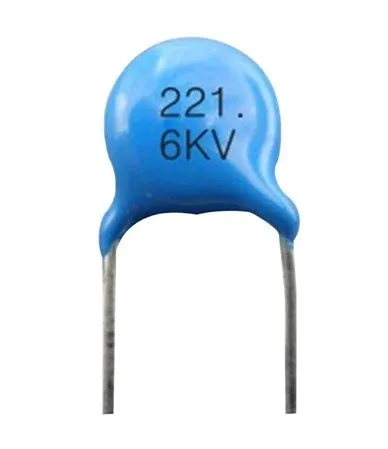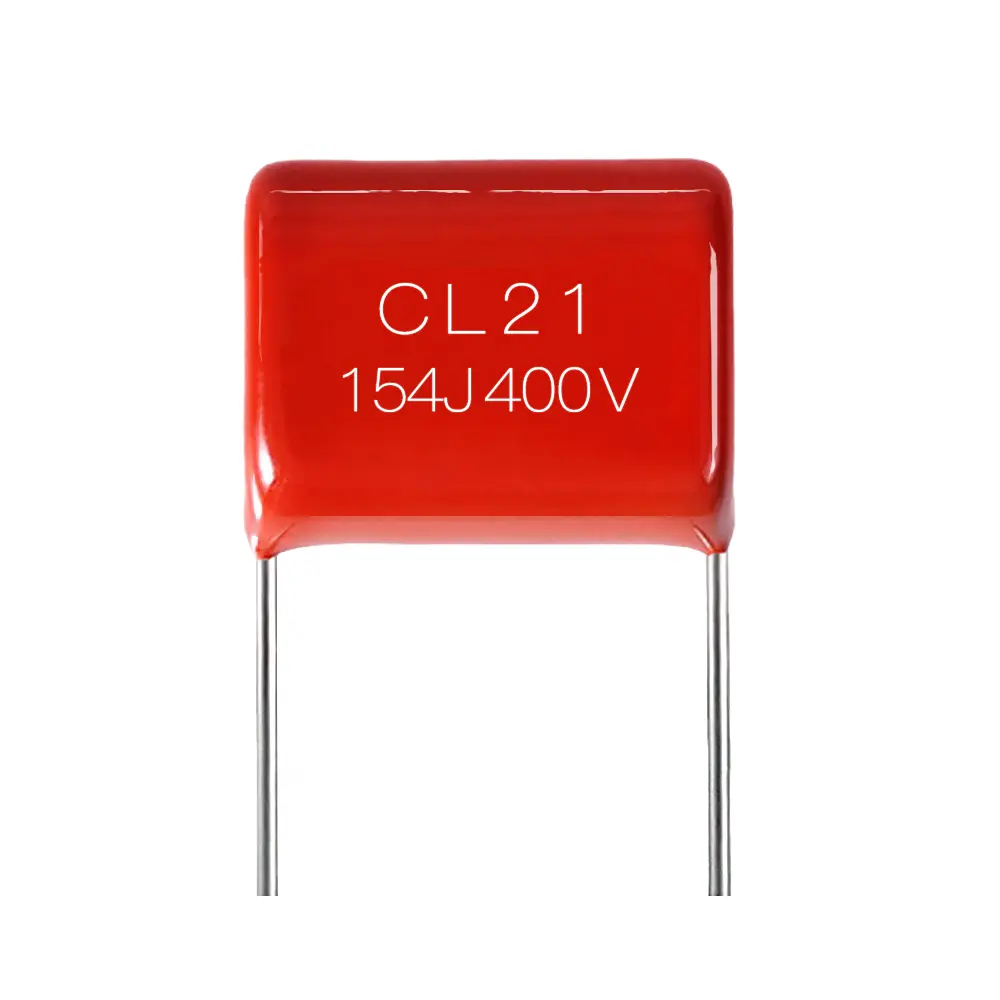Film vs Ceramic Capacitor: What's the Differences?
Knowing the Film vs Ceramic Capacitor differences is important when choosing the right capacitor for your project. Choosing the right type for your application is essential since each type has unique advantages and disadvantages. A quick comparison of film and ceramic capacitors can be found here.
You can find specific applications for film capacitors and ceramic capacitors depending on their differences. Then you'll be able to determine which type of material is best suited to your next circuit design based on materials, performance, and uses. Here's a deeper look at how our electronic devices operate thanks to capacitive components.

What Is a Ceramic Capacitor?

Ceramic Capacitor
Using alternating ceramic and metal layers in its design, ceramic capacitors are polarized devices.
In the detailed comparison of film vs ceramic capacitor, first you need to understand each of them carefully. In addition to providing reliable operation for a long time, its robust design makes it easy to maintain. Material such as aluminum oxide, barium titanate, and titanium dioxide is used to make dielectrics. In application areas where small size, high capacitance, and high temperature and voltage changes are needed, ceramic capacitors are commonly used. In addition, they do not suffer from parasitic inductance since they have a very low self-inductance.
Due to their size and high capacitance, ceramic capacitors are ideal for applications requiring a small footprint. Moreover, ceramic capacitors are less sensitive to thermal expansion than film capacitors, so they can withstand temperature changes better. Despite their advantages, ceramic capacitors have a number of disadvantages. Higher frequencies can result in greater losses because of these capacitors' lower impedance. Furthermore, their relatively slow response time may cause instability issues when used with high-frequency switching power supplies.
What is a Film Capacitor?

Film Capacitor
Electronic devices often use plastic film capacitors, or "metal film capacitors," as a capacitor type. A thin plastic film acts as a dielectric layer between two conducting plates in this type of capacitor. Polypropylene (PP), polyester (PET or PEN) and polycarbonate (PC) are commonly used dielectrics.
Because this type of material is stable over a wide range of temperatures, it also loses very little power. In comparison to other types of capacitors, film capacitors are relatively small, which makes them suitable for applications with limited space. Additionally, ceramic capacitors have excellent frequency characteristics and can handle higher voltages.
Compared to other types of capacitors, they are relatively expensive and unsuitable for high-temperature operations because of their plastic content. The use of film capacitors with audio frequencies should also be undertaken with caution, as they tend to generate heat at higher frequencies. A film capacitor's small size makes them ideal for applications at low temperatures and in limited spaces. They are also capable of handling high voltages and have excellent frequency characteristics. As a result of the increased heat generated by these devices, they may not be appropriate for some applications and may be prohibitively expensive in others.
Film vs Ceramic Capacitor: Best Differences
A rolled up film dielectric is used to construct a film cap. Polycarbonate, Teflon, and polycarbonate are also common materials for film capacitors. Film capacitors are more stable than ceramic capacitors, which are the most common type. High-precision applications can benefit from their reduced sensitivity to temperature variations.
Unlike ceramic capacitors, ceramic capacitors consist of two metal plates sandwiched between a ceramic disc or plate. Compared to film capacitors, this type is often cheaper and smaller, but less accurate and reliable over time. Accuracy and reliability are usually less important in ceramic capacitor applications than size and cost.
A capacitor's performance must be taken into consideration when choosing between film and ceramic capacitors. As film capacitors offer a higher degree of stability and dependability, they are often the best choice for applications requiring high precision. Alternatively, ceramic capacitors can save money and be smaller, resulting in a more cost effective solution. Each type of capacitor has its advantages and disadvantages, depending on the application.
What is the cheapest type of capacitor?
If you are doing film vs ceramic capacitor comparison, then you also need to look at the price tag. Film capacitors of an equivalent capacitance value are generally more expensive than ceramic capacitors. Ceramic chip designs can be manufactured at low cost by using ceramic dielectrics. Ceramic capacitors are also very economical due to the large volume of production.
Assembling film capacitors requires more manual labor and more costly plastic film dielectrics. Manufacturing costs can also be reduced by reducing production volumes. A film of this quality is worth the cost for circuits with precision and stability.
Does ceramic work better than film capacitors?
Ceramic capacitors can usually replace film capacitors in most cases. In making this decision, you should consider some important differences between the two. Ceramic capacitors offer a higher capacitance, but are more expensive. As compared to large value film capacitors, they also typically have shorter lead times. Film capacitors, however, tend to be more stable at high temperatures and have better ripple current ratings. Regarding EMI/RFI frequencies, ceramics aren't likely to perform better than films when it comes to noise reduction.
Faqs
Question 1: Why are ceramic capacitors better?
Answer: Low-loss devices are primarily manufactured with ceramic capacitors due to their high stability. As well as providing accurate results, these devices keep their capacitance values stable over a wide range of voltages, frequencies, and temperatures.
Question 2: Are film capacitors good for audio?
Answer: This audio film capacitor is preferred by audio engineers for professional, commercial, stage, and studio applications because of its high quality materials and proprietary design and manufacturing processes.
Question 3: Why do ceramic capacitors fail?
Answer: Several methods can be used to break ceramic capacitors. Mechanically destroyed parts (for example, boards bent too far) can be damaged by too much physical stress. Capacitors have layers that can form short circuits between them. A resistor would be more appropriate in that situation.
Question 4: Can ceramic capacitors outperform electrolytic capacitors?
Answer: A ceramic output capacitor is less likely to have an impedance variation across frequencies when combined with an electrolytic output capacitor. In low frequency applications, large electrolytic capacitors are suitable, but in high frequency applications, ceramic capacitors are required.
Final Verdict
In conclusion, I hope you now have all the knowledge regarding Film vs Ceramic Capacitor differences and how to choose the best one. High currents and low temperatures are ideal for film capacitors, while high temperatures and low currents are ideal for ceramic capacitors. There are advantages and drawbacks to both types of capacitors, but you should be aware of their differences so you can decide which type is right for you.
Related Articles
How Long Do Electrolytic Capacitors Last
How to Charge Capacitor Without Resistor?
Air Conditioner Capacitor Basics: What You Need to Know
Why Do Capacitors Explode?
What is the Standard Lead Spacing for Capacitors?
What Is CBB61 Capacitor - Function and Applications
What Causes Capacitors to Fail
Run Capacitor vs Start Capacitor
Radial vs Axial Capacitor: Whats the Differences?
Polyester vs Polypropylene Capacitors: Explained
Polarized vs Non-Polarized Capacitor
How to Test a Hard Start Capacitor [Complete Guide]










